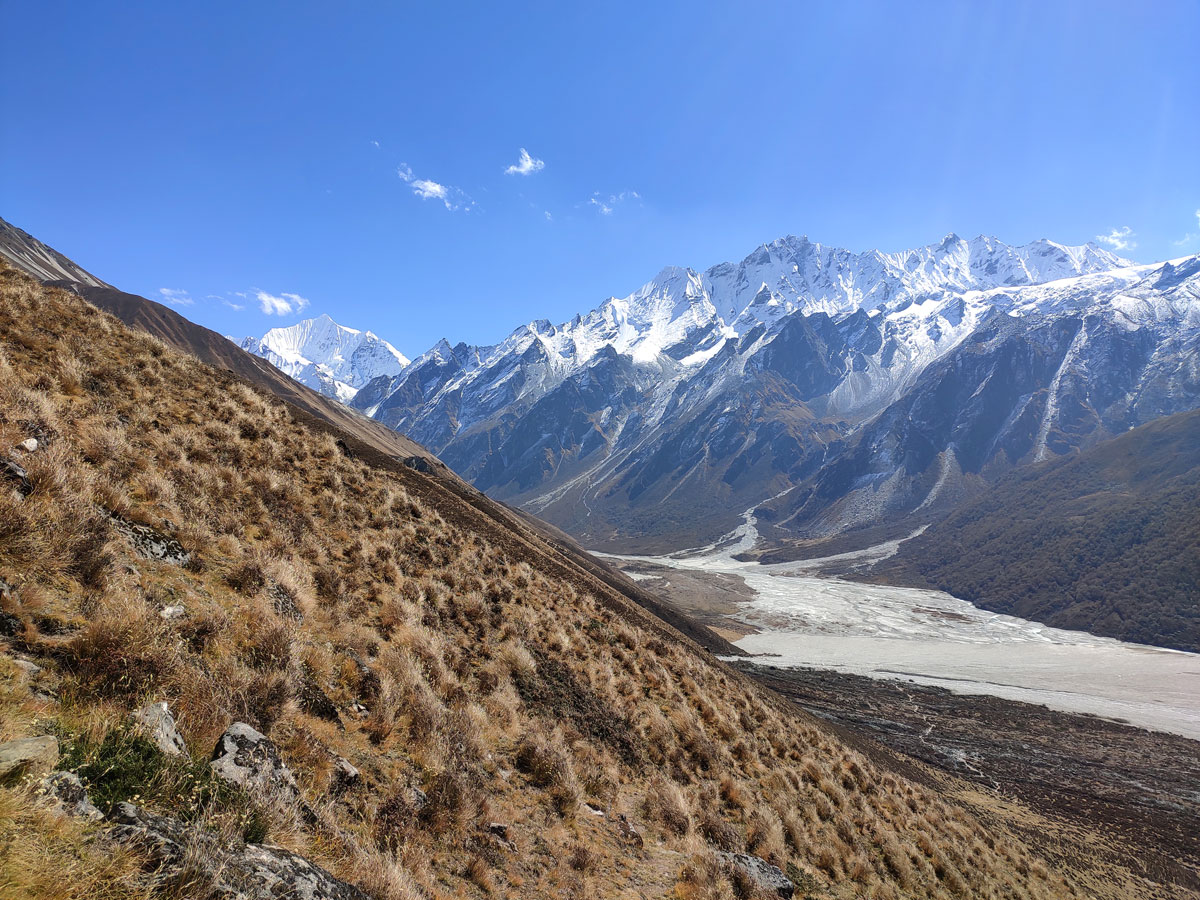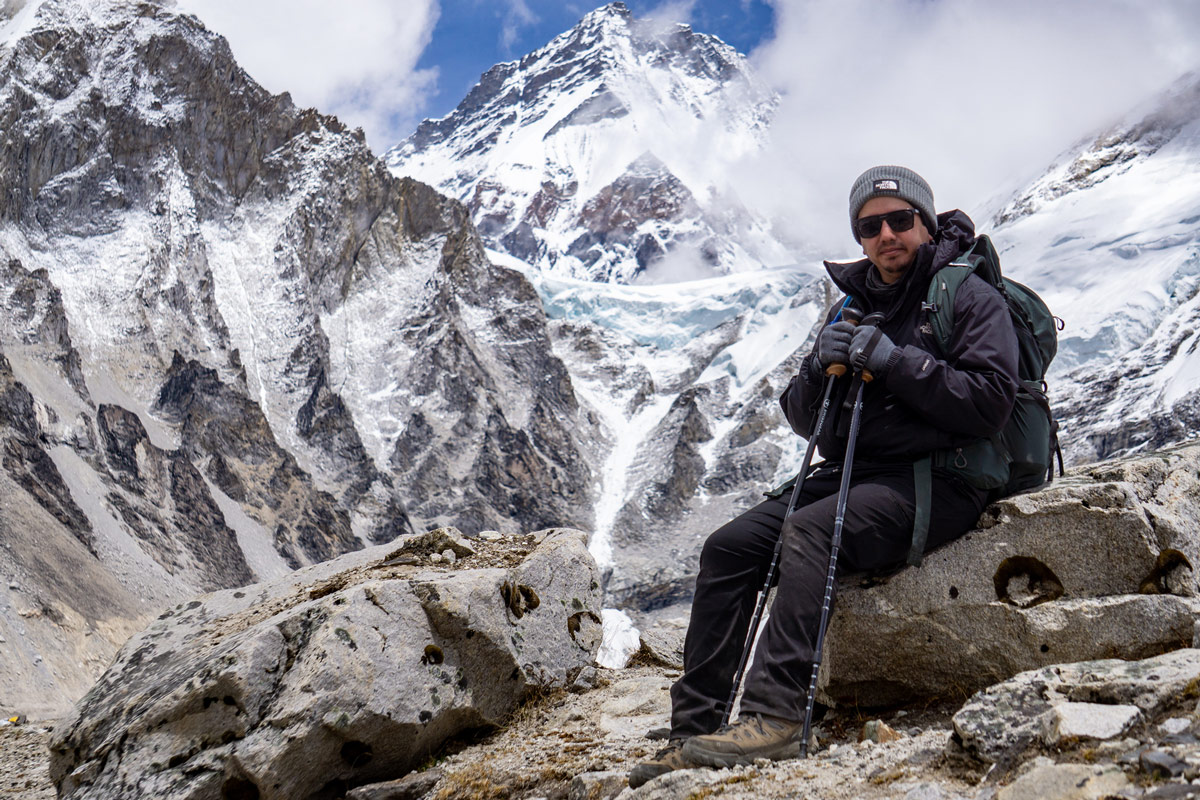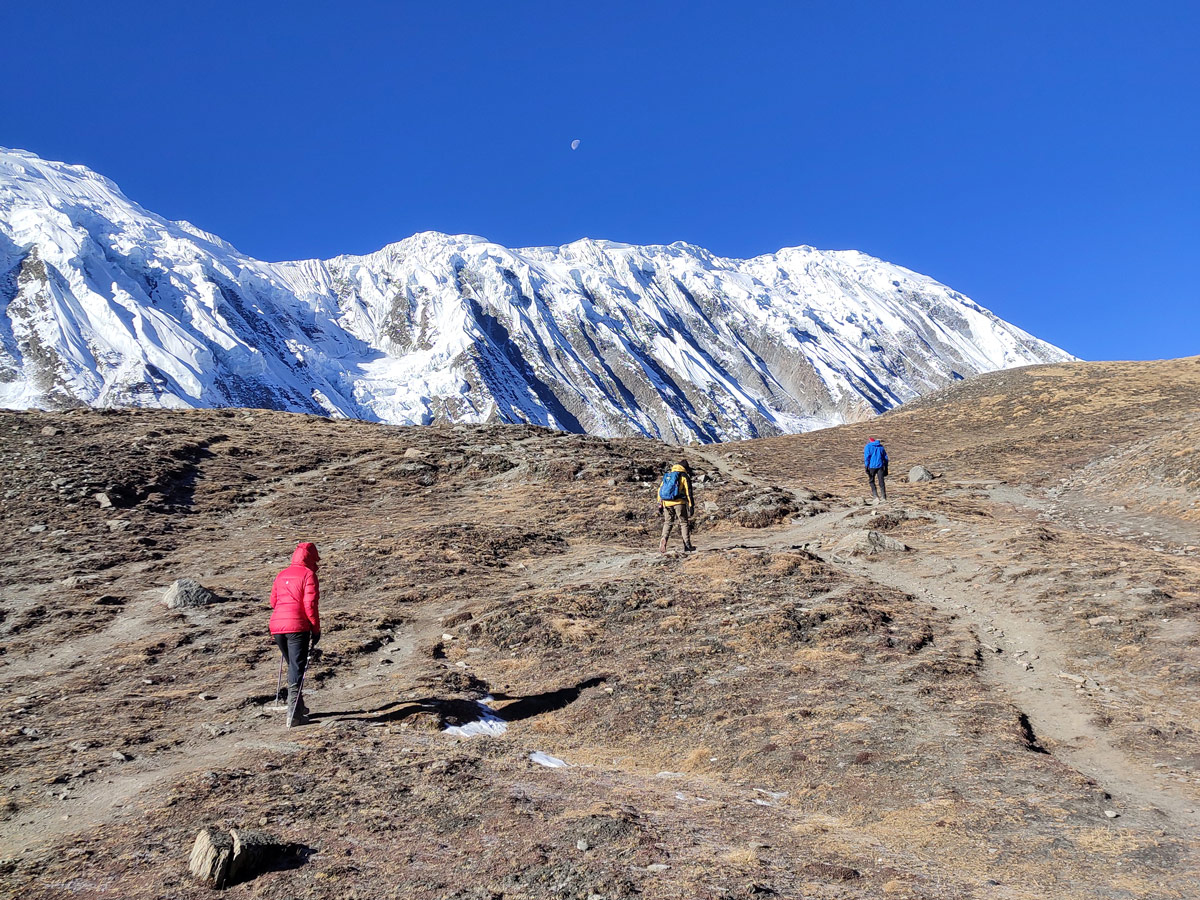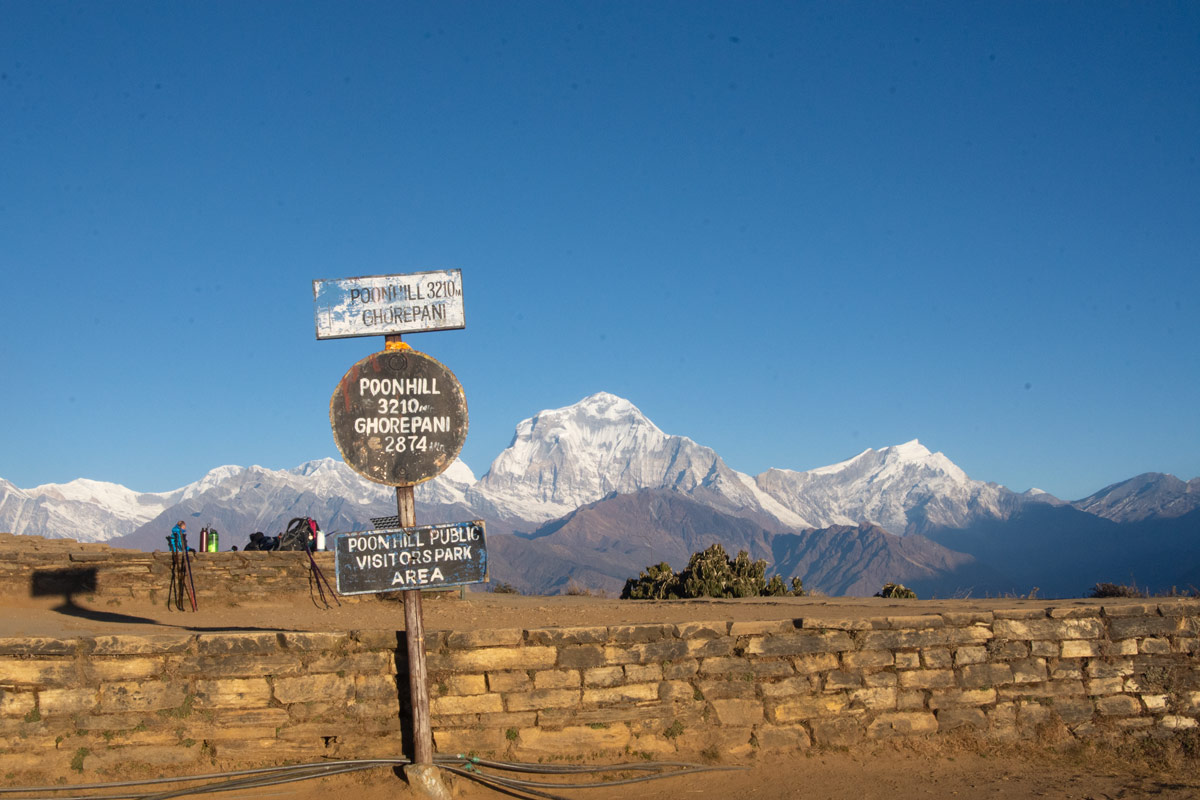Imagine a valley adorned with prayer flags, surrounded by majestic snowcapped Himalayas, home to a variety of plants and animals, and also having glacial beauty. Stunning, isn’t it?
The Langtang Valley in Nepal which is often referred to as the ‘Valley of Glaciers’ is the physical manifestation of this place. This stunning place has been gaining popularity because of all these reasons.
The Langtang Valley trek takes you on an adventurous exploration of the Langtang Valley and it is an experience that you will remember for a lifetime. It is an emerging choice for beginners as well as seasoned trekkers.
However, before you embark on this journey, it is important that you understand the challenges that await you. Therefore, in this blog we discuss the Langtang Valley trek difficulty and the ways to overcome it.
Overview of the Langtang Valley Trek
Located at a relatively closer proximity from Kathmandu Valley, the Langtang Valley trek is one of the emerging trekking routes in Nepal known for its accessibility and scenic beauty.
Enclosed in the Langtang National Park, this trek features a wide variety of flora and fauna, different landscapes, and as a bonus comes the warm hospitality of the Tamang people.
This trek covers the distance of almost 70 kilometers which is conquered within 8 to 10 days and it treats you to the scenic views of the Himalayan giants like Langtang Lirung, Langtang II, Kyanjin Ri, Yala Peak, Tserko Ri, and more.
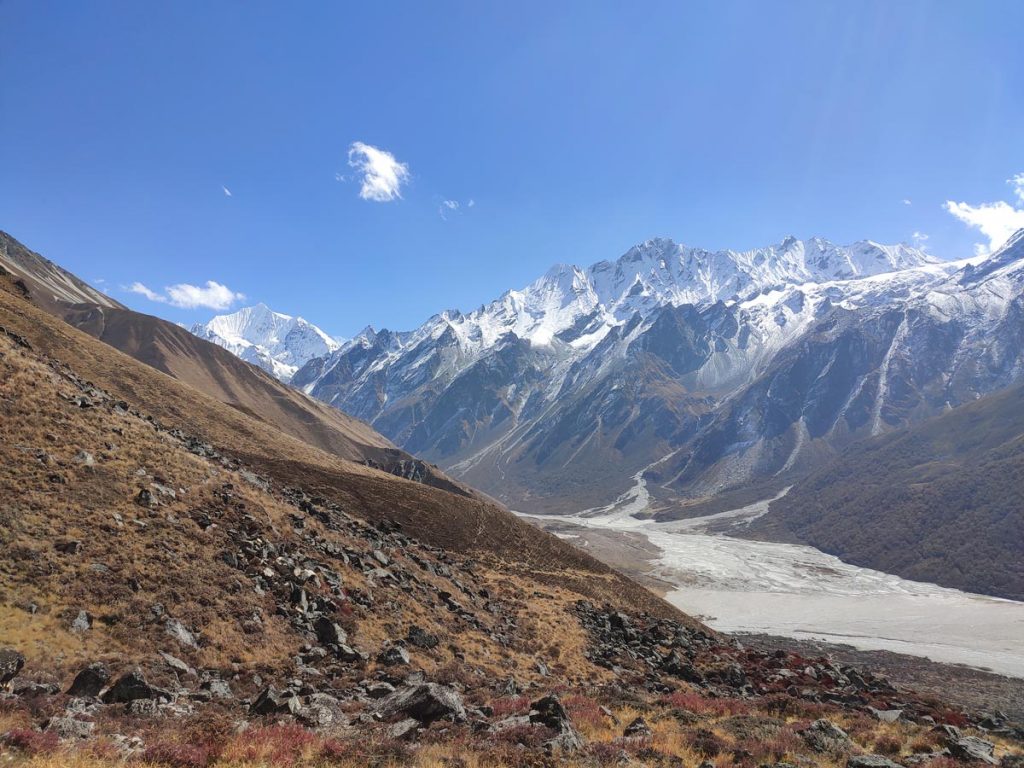
You will also come across glaciers during this trek. This trek is the perfect blend of stunning scenic beauty and warm cultural interactions and it is often hailed as one of the beginner friendly trekking routes of Nepal.
Starting from Syabru Besi which is the gateway of Langtang region, this trek takes you all the way to Kyanjin Gompa which is one of the spiritual sites in the Himalayas of Nepal. Some people even go one step ahead and ascend to Tserko Ri.
Langtang Valley Trek Difficulty Breakdown
The difficulty level of Langtang Valley trek is subjective and it depends on several factors. While for some people with prior experience and a good level of fitness the trek might be a piece of cake, for beginners it might fall along the lines of a strenuous trek.
Let’s have a look at different factors that add to the challenge of the Langtang Valley Trek and push your limits.
Altitude
The Langtang Valley trek is quite flexible in terms of altitude, and you can customize the highest point of the trek based on your comfort level. Generally, the highest point of the trek is at Kyanjin Gompa at 3,830 meters.
However, for those wanting to test their boundaries, you can also add an extra day to your itinerary and ascend Tserko Ri which is the pinnacle of the trek at 4,984 meters which makes it a high-altitude adventure.
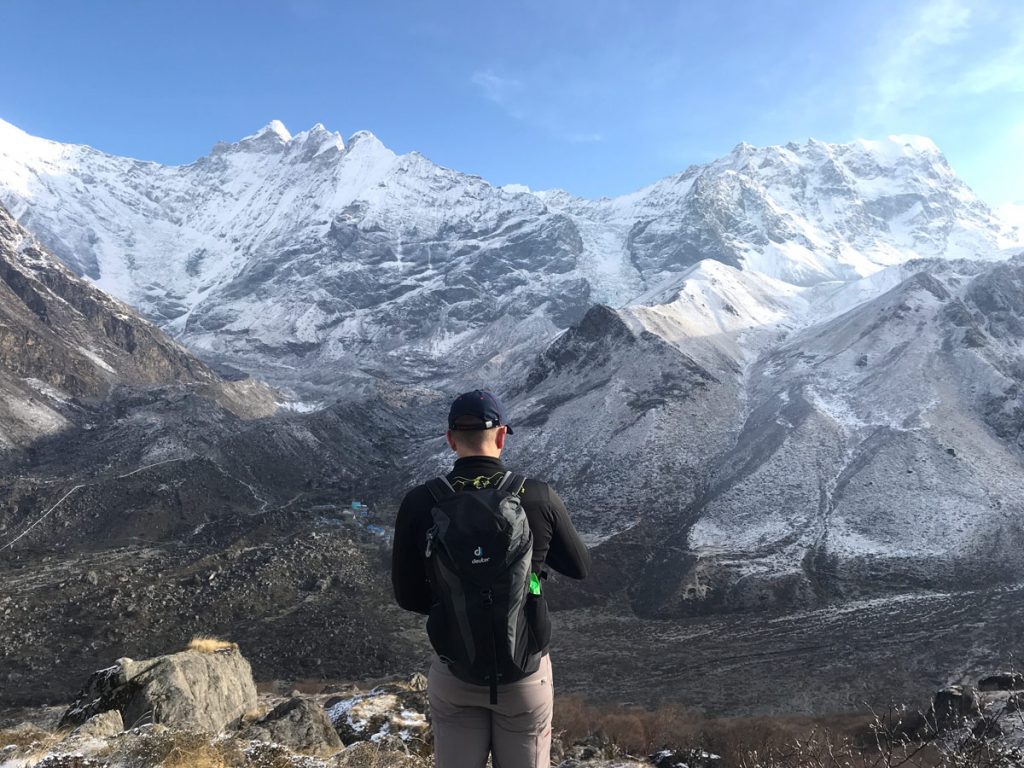
The main thing that challenges you here is altitude sickness because as you ascend the air becomes thin with limited availability of oxygen. This can lead to several issues like headache, nausea, dizziness, and other serious problems.
While this can also happen at an altitude of 3,830 meters, it is more likely to become worse if you are ascending Tserko Ri. Therefore, it is of utmost importance that you take proper precautions and preventive measures.
Distance and Terrain
Covered over a duration of 8 to 10 days, the Langtang Valley Trek typically covers a total distance of around 70 kms. Depending on your pace and other trail conditions, the number of days might vary.
So, you will be walking for at least 4 to 6 hours every day on a wide variety of terrains including well managed trekking trails, rocky paths, switchbacks, and sometimes even scree.
Covering such a distance while carrying a certain weight on your back can be challenging, especially for beginners. It not only tests your endurance but also can leave you with sore and painful muscles every night.
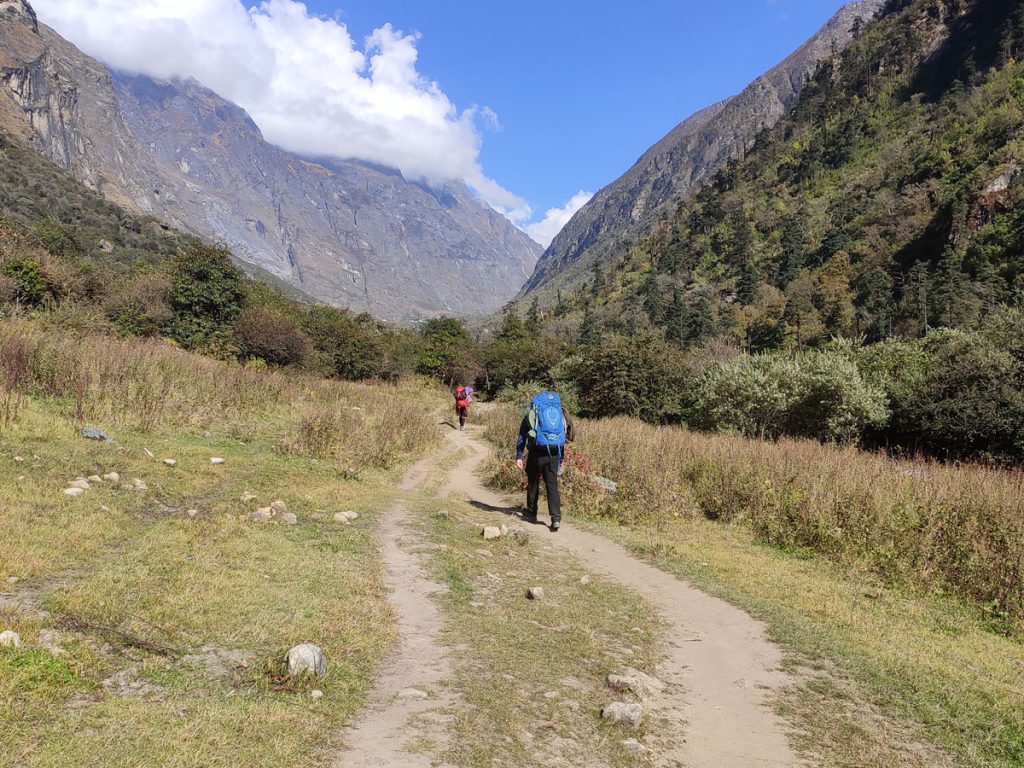
You will find that the trails are a mix of forested trails, rocky ascents, and even potentially covered with snow, especially if you are ascending to Tserko Ri.
At certain sections of the trek, you will also need to cover steep ascents and knee jerking descents which can range between moderate to strenuous levels of physical exertion.
Therefore, you must be prepared well to deal with the issues like physical exertion, long continuous walks, sore muscles, and difficult terrains while also managing your altitude related challenges. And this might be too much to handle, especially for a first-time trekker.
Weather and Climate Conditions
Similar for most of the trekking routes of Nepal, the climatic conditions are usually one of the challenging factors for the trekkers as the weather of high-altitude regions are highly unpredictable.
When it comes to the Langtang Valley trek, the climatic conditions are unpredictable too, but they don’t get as bad. Expect some basic difficulties and weather-related challenges but not up to the extent of snow storm and avalanches.
During the months of Spring (March to May) and autumn (September to November), you will find that the trekking conditions are favorable with moderate climate and clear skies which makes these the best season for trekking the Langtang Valley.
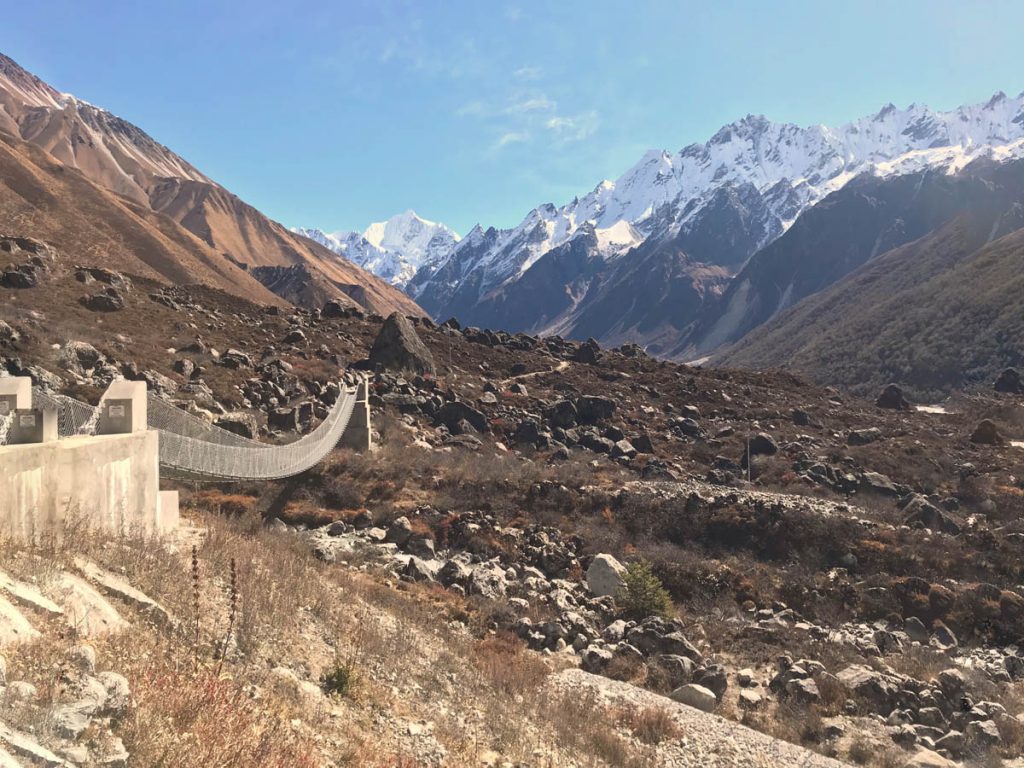
The months of monsoon (June to August) make the trek much more difficult as you will be dealing with sudden and heavy downpours. It makes the trail slippery, and the trail will most likely be infested with leeches.
You will have a higher risk of slippage and injury while trekking the Langtang Valley during monsoon. The trail might also get affected if there is heavy rainfall and issues like landslides and trail blockage are highly probable.
During winters, you will have to deal with extreme temperatures and pack your gear accordingly. Chances are you might come across a snowy trail and that’s about it. You can explore the Langtang Valley from a different perspective during winters.
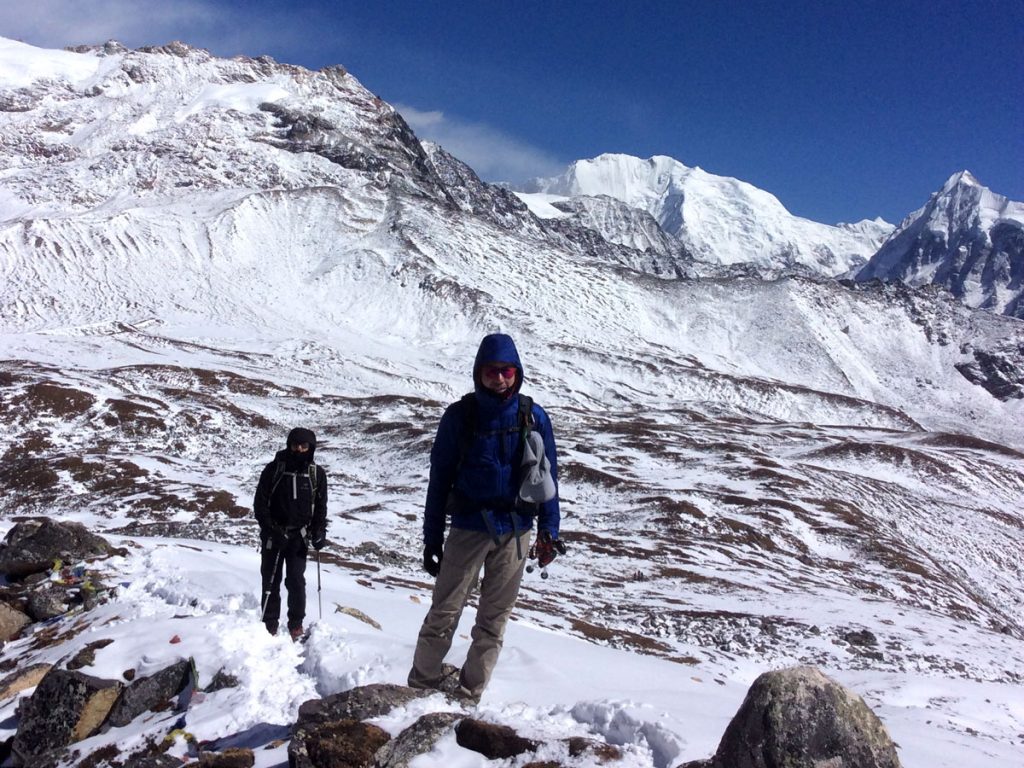
Keeping these things in mind, it is important that you research well about the best time for trekking in Nepal before picking the ideal season for you. Also prepare well in terms of gear and packing list for the trek.
Prior Experience
Another thing that determines how difficult your Langtang Valley adventure is going to be is your prior experience with trekking in general. While the Langtang Valley trek is one of the beginner friendly trekking routes, it can be challenging.
While you don’t compulsorily require prior trekking experience, having it makes your trek a lot easier. It allows you to blend in with the local culture and make the most of your trek.
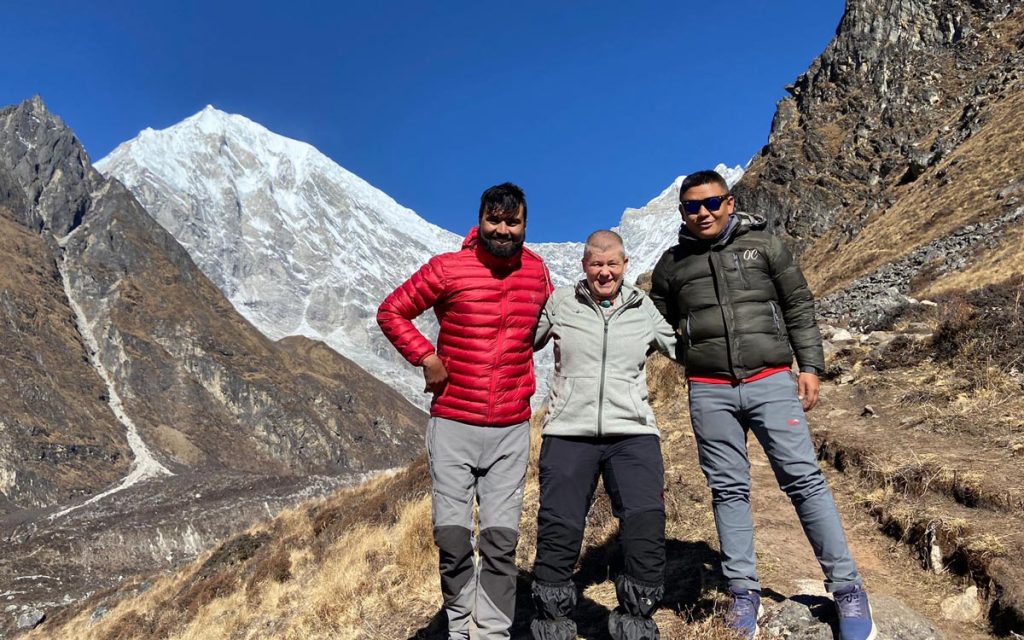
With prior trekking experience comes the awareness regarding altitude related challenges, experience of dealing with long everyday walks, knowledge of what to pack and what to skip, and the experience of a remote trekking journey altogether.
Although beginners can embark on the Langtang Valley trek, they require much more preparation in terms of research, physical fitness, trail awareness, as well as overall endurance to deal with the physical pain and mental challenges of the trek.
Accommodation
Being a basic trekking route, the Langtang Valley trek features basic accommodation options including cozy teahouses and lodges throughout the trek.
You can also opt for home stays which gives you an opportunity to better interact with the locals. You will be treated to basic amenities, depending on the location, and delicious local food.
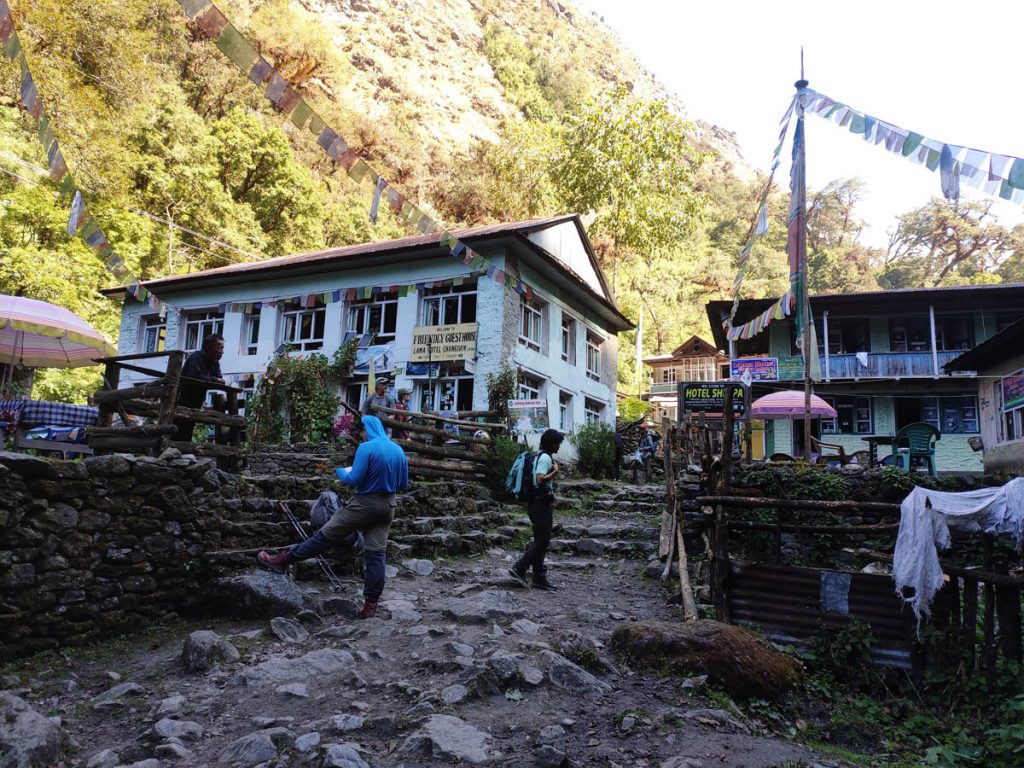
Accommodations at stops like Bamboo and Lama Hotel are basic, with shared facilities and limited services. In contrast, Langtang Village and Kyanjin Gompa offer slightly better amenities, including guesthouses with attached bathrooms and hot showers.
Preparing for the Langtang Valley Trek
Now that we have covered the challenges that you will face during the Langtang Valley Trek, it is also important to know how to tackle these difficulties and make your trek a safe yet memorable adventure.
Physical Preparation and Training
First things first, the main thing that can alter your entire trekking experience is your physical fitness. It determines whether you will be enjoying your trek or dragging your feet till the last day of it.
So, you should prepare well and achieve at least a basic level of physical fitness before you embark on the Langtang Valley Trek. The higher fitness level, the better your trekking experience will be.
For this, you have to start training at least 3 months prior to the trek. Indulge in an overall workout regime including strength training, cardio, and other basic exercises including stretching.
While doing cardio, you develop the strength of your heart and lungs which is important to deal with the limited availability of oxygen on the trek. So do basic cardio like running, swimming, cycling, and such other exercises.
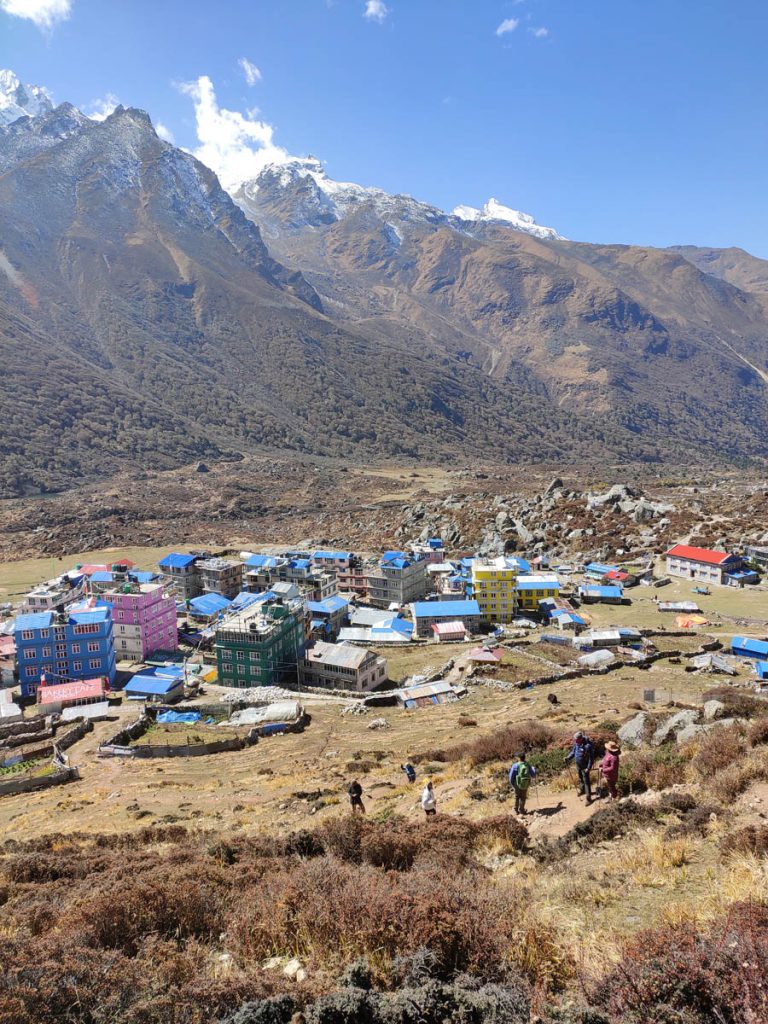
Besides that, focus on strength training and your main focus should be on your shoulders, back, core, legs, and calf muscles. This is to train your body for long walking hours with a weight and steep ascents and descents.
One more thing that you can do is go on regular hikes nearby, preferably where there is an altitude gain. This trains you in conditions as close to the trek as possible. Climbing and getting down the stairs of a tall building also helps.
Include stretching in your routine to help with flexibility and sore muscles. It is best to start slow and then gradually increase the intensity of these workouts.
Packing Smart
Another thing that can make or break your entire trekking experience is your gear and accessories. You need to pack smartly enough to ensure that you don’t miss anything important, and you don’t overpack at the same time.
The best way to do so is to refer to a guide or a packing list for any high-altitude trek, better if you have Langtang Valley Trek packing list. Refer to it based on your trekking season and make any minor changes if needed.
The basic items that you should carry are suitable layers of clothes including insulating inner layer, warm middle layer, and fluffy outer layer. Opt for convertible clothing if possible.
Other essentials are a good pair of trekking shoes, a first aid kit with basic medicines, other gear and accessories, waterproof outer layer, gaiters, and reliable sleeping bag. You can also opt for renting some of these items.
Health and Safety Precautions
Awareness regarding the trek is as important as your enthusiasm to be on the trek. While it is a thrilling adventure, it might even turn into a horrible experience if you don’t take proper safety precautions.
Firstly, you should go for a complete medical checkup before the trek to check if you have any underlying issues. If so, you can carry medications so that you don’t face any issues in the extreme conditions of the Langtang Valley Trek.
Besides that, you should research well about acute mountain sickness and take preventive measures for altitude sickness. These include acclimatizing well, proper hydration, balanced diet, and a slow and steady ascent.
You also need to carry all your important medicines as you might not find them easily while on the trek. Carry some nutritional snacks to keep you going throughout the day.
Before embarking on the Langtang Valley Trek, it is best to get comprehensive travel insurance so that you don’t face any logistic, safety related, or financial shockers throughout the trek.
One important thing that ensures your safety is that you should always trek with an experienced guide as they know all the emergency routes of the Langtang region and can be helpful during any difficult situation.
Mindset and Pacing
While it might not seem important, your mental fortitude is also a crucial factor in deciding how difficult the Langtang Valley trek is going to be for you. Therefore, focus well on your mindset and pacing too.
Indulge in activities of mindfulness including yoga, meditation, and breathing exercises which help you think positively and strengthen your mental fortitude to deal with all the challenges of the trek.
Visualize the trek and set realistic goals which you can achieve in a day. Remember, on treks like these, less is more. Carry board games, cards, and books if you want some activity to distract yourself from the challenges.
